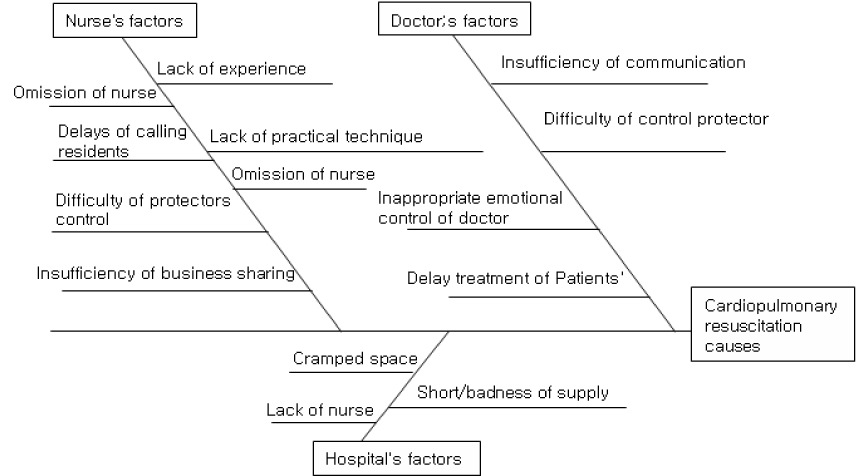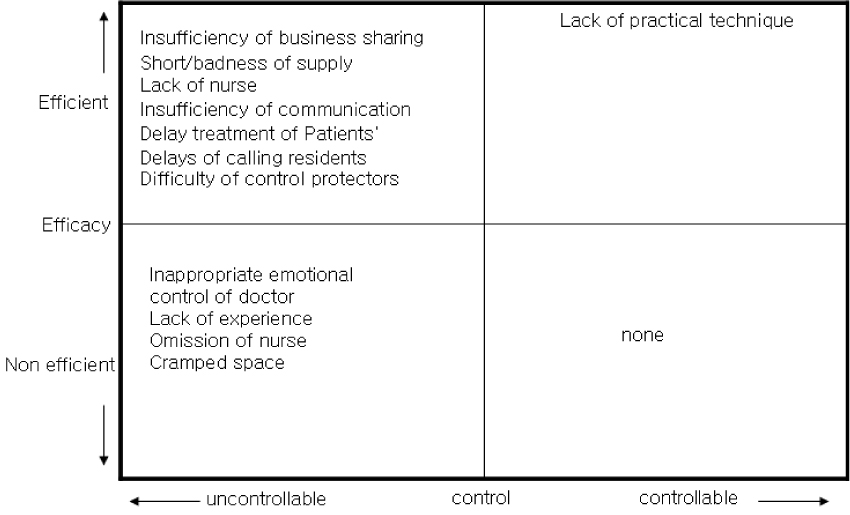1Instructor, College of Nursing, Chonnam National University, Korea.
2Professor, College of Nursing, Chonnam National University, Korea.
Copyright © 2010 Korean Academy of Nursing Administration



Major problems of nurses' and doctors' CPR performance* (Nurse, N=63, Doctor, N=43)
*Multiple responses
Comparison of nurses' knowledge level between before and after CPR training† (N=16)
†Statistical analysis by Wilcoxon signed rank sum test
Comparison of nurses' performance level between before and after CPR training (N=16)
A guideline on CPR training
Degree on the improved team's competencies after participating in the 6-sigma courses (N=10)
*Multiple responses
†Statistical analysis by Wilcoxon signed rank sum test